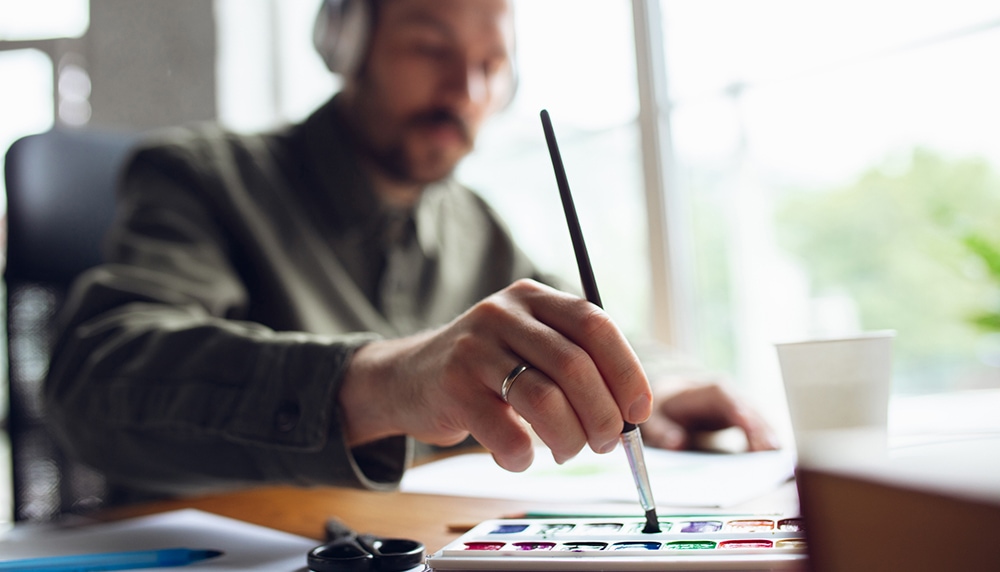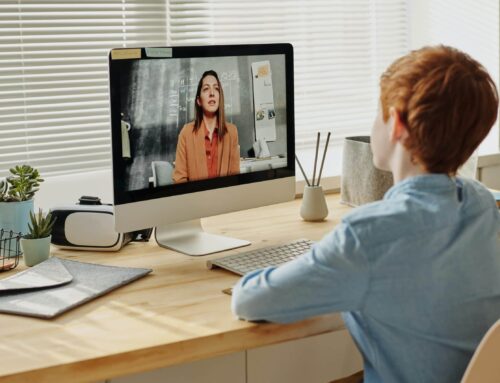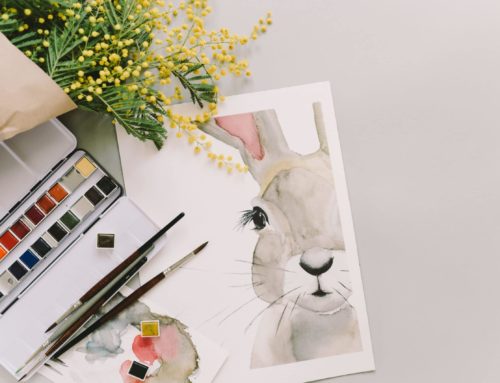Online Art Therapy Programs
How Art Therapy Works Online
Art Therapy is growing and changing along with our social needs. One might think that hosting an Art Therapy session online might be difficult; however, Art therapists have long been eager participants in Telehealth practices. Practicing Art Therapy online involves the amalgamation of several different fields: psychotherapy, art therapy, communication, information science, clinical psychology, media psychology, and many others (Walls, in Malchiodi 2018, p.159).
Art Therapists have been experimenting with digital art as an option to increase personal expression, and to provide access to art materials. The definition of digital art therapy can be, “all forms of technology-based media, including digital collage, illustrations, films, and photography that are used by therapists to assist clients in creating art as part of the process of therapy (Malchiodi, 2011, p.33).”
Consent, which is an important feature of in-person art therapy, is just as important, if not more so, when engaging in art therapy online. All of the same basic principles remain (duty to disclose information, limits of confidentiality, and protecting your personal health information). When providing consent for online therapy, an important issue to consider is security; check that your art therapist is using a safe end-to-end encrypted software (ACA), and that they are alerting you to the ways in which they keep your personal health information safe.
Some things to consider:
- Where is your information saved?
- Does your therapist work for a company who uses IT security specialists?
- Do you feel comfortable using technology-based media, knowing the limits of online security?
- How will your therapist handle online interactions outside of therapy? Are they available by email 24/7, or are there limits to their availability?
- What kind of electronic footprint do you have? How likely is it that you will cross paths with your therapist online, and how will this be addressed?
In spite of our best efforts, working online is very complex. More opportunities exist for information to get lost, and for miscommunications to occur. You and your therapist will need to work together to address these issues.
How do you know if Telehealth is for you?
Feeling comfortable with your therapist, building trust within the therapeutic relationship, and working together on issues which are important to you, are central aspects of both in-person and online art therapy. They differ in the following ways:
- The way in which your therapist will engage with you. For example, information such as body language, and energy in the room, are not always discernible in online therapy; therefore, your therapist may need to ask you more questions throughout your session. You can, however, choose to work quietly, and your therapist will hold that space with you.
- During in-person therapy your therapist has the opportunity to observe your art making process. This is not always possible for online art therapy, unless you have two cameras placed at different angles during the session.
- The therapist stores art made during in-person art therapy sessions under lock and key to ensure confidentiality. During online art therapy, the therapist may take a screenshot of your artwork, or ask you to email a copy of the image. All art collected this way will be kept in a safe secured space online, as part of your client file. It would be your responsibility to keep your pieces of artwork as private as you can – either in a sketchbook or some kind of folder.
Finally, whether you’re meeting in person or online, the therapy space is very important for a successful therapy session. Your therapist’s space should resemble that of an office you would meet in; comfortable, professional and private.
Your space should include:
- Privacy: a closed door, separate from other more public spaces in the home.
- A comfortable place to sit
- A neutral environment: what can be seen in your space? Be mindful that your therapist is your private space. Be mindful of what can be seen openly.
- Headphones: an additional way to keep your conversation more private is by using headphones with a microphone attached. They will not only keep your conversation more private, but will also make it easier to hear and be heard by your therapist.
– Art Materials: Ensure that you have the art materials you wish to use before you begin; this may also be an opportunity to think more about your therapy space. Do you need a desk? Is the bed a safe place to paint? Is there enough light in the room?






